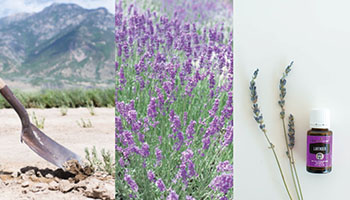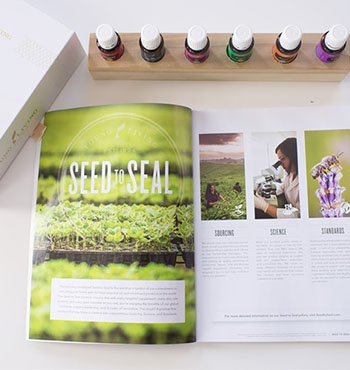Essential Oils
Improve your pet’s health with Young Living essential oils

We love our animals as part of our families, we respect them, and we hope for a quality of life that benefits us both. We are all interconnected – animals, plants, and humans alike. We share the same air, the same water, and the same ground. And as caretakers we owe it to ourselves and our family to provide our furry family members with a less toxic, safer, well fulfilled long life. When bringing your pet(s) to Dr. Tania Woerner, she can help you to safely incorporate Young Living Essential oils into your family and as part of your pets care so that they may live a longer more content life. Dr. Woener is dedicated to improving pet’s lives with safe essential oil usage.
What are Essential Oils? Essential oils are distilled from parts of the plant, fruits, rinds, resins, and herbs and consist of over 100 different natural, organic compounds. In pets and people essential oils provide support for every system in the body: skeletal, muscular, cardiovascular, respiratory, endocrine and immune. They support brain health and optimal weight and may be used to affect emotions, decrease stress, and elevate mood. Oils can be used to replace toxic chemicals in household cleaners, detergents, room deodorizers, candles, shampoos and more.
How do I use Essential Oils? Animals are generally more sensitive to essential oils than humans are, thanks to their enhanced sense of smell. It’s best to heavily dilute essential oils and use them in moderation. Every animal is different, so carefully observe how your animal responds to essential oils. Use common sense and good judgment as you try different methods.
There are three main ways to use essential oils:
-
- Topical: Once your pets are used to essential oils, topical application can be well tolerated. Keep these tips in mind as you experiment with using essential oils on your pets.
- Tip One We recommend applying to the back for dogs and cats, being sure to rub your hands together until they are no longer shiny before rubbing the essential oil on the pet.
- Tip Two For animals with hooves, apply to the spine and flanks, avoiding the face and putting them in a place that allows the essential oil to evaporate and breathe. Also, do not apply oils under any tack or saddles.
- Tip Three For easy and comfortable application, rub oils between your own hands until they are no longer shiny and then apply by stroking the animal.
- Tip Four For easier application in large or hard-to-reach areas, combine essential oils with V-6 or water in a spray bottle.
Important! Do not use essential oils on and around cats or dogs under 8 weeks old because they are developing at fast rates; it is not uncommon to mess up the proper dilution for each breed. Be especially careful to not get essential oils in an animal’s eyes
- Aromatically: Your pets may need some time to adjust to the new scents and sensations of essential oils. Use these tips to introduce your pets to essential oils in an easy and comfortable way.
Wear essential oils throughout the day, so your pets will be exposed to the aroma as you hold them, play, or cuddle on the couch.
Diffuse essential oils in spaces where your pets like to relax. Keep in mind that dogs tend to stay in a room with their owner even if something is bothering them. Closely watch for signs of irritation—such as whining, sniffing, nervousness, and excessive scratching—while diffusing around them.
When diffusing essential oils around cats, be sure to only diffuse in areas that allow the cat to leave if it doesn’t want to be there.
Apply an essential oil to your hands and let your pets smell them, so they can explore the scent on their own terms.
If your pets are jittery or resistant to essential oils, try applying an oil to yourself and staying near the pets for several minutes, so they can get used to the aroma.
- Internal: By adding them to food or putting them into capsules.
Important! This method should only be under the direction of Dr Woerner. You should not attempt to mix oils with food unless directed by a veterinarian.
If you choose to mix essential oils with your pet’s food, keep in mind that the smell may make the food undesirable to the pet; this is especially true for cats.
If you apply oils to places on their body they can lick, they will likely consume some of the essential oil as they groom and play. Make sure you dilute heavily, so the amount your pet licks is minimal.
Never force your pets to consume essential oils or food mixed with essential oils.
Tests have shown that essential oils applied to the skin reach the bloodstream in 26 seconds and when inhaled reach the major organs in as early as 3 seconds.

There are so many options, how do I know which brand to use? It is important to know that not all essential oils are alike! Many essential oils purchased from your local stores or through Amazon have either been diluted, contain added ingredients (to make the oils stretch), or have added synthetics in them which would be highly toxic to your pets and family. Certain additives and dilution can also determine whether or not the essential oil will be effective and safe.
Did you know that by FDA only requires that an essential oil labeled as 100% pure actually ONLY has to have more than 10% of an essential oil within the bottle? No thank you! Our pets and patients deserve purity and no chance to the unknown. After much research, Dr. Woerner selected Young Living Essential Oils as the company to supply her essential oils for her and her patients based on their Seed to Seal promise, a many step process that ensures quality and purity along with their Veterinary Advisory Council. Young Living’s love and passion for animals is like no other and easily seen by how well cared for and spoiled their animals are.
Young Living oils are Grade A oils, which means they are therapeutic grade, made from organically grown plants and distilled at low temperatures. The oils that you can purchase in the grocery store, or health food stores are typically Grade B which may contain pesticides, fertilizers, and other chemicals which may actually be harmful. It takes a great deal of work to produce a tiny amount of essential oil. Lavender, one of the more abundant plants, takes 220 lbs of plant material to produce only 7 pounds of oil. A Sandalwood tree must be 30 years old and 30 feet high before it can be cut down for distillation. Due to their purity, a little bit goes a long way.
Why should I use Young Living Essential oils? Companion animals are even more vulnerable than we are to the damaging effects of indoor air pollution. According to the Environmental Protection Agency (EPA), “indoor air pollution poses high risks to human health, especially sensitive populations, and has ranked among the top four environmental risks in relative risk reports.” Studies show that indoor air in homes is, on average, two to 20 times more polluted than the outdoor environment. Most people are shocked to learn that it’s not unheard-of for indoor chemical concentrations to rise to as much as 100 times the outdoor air concentration! But even at much lower levels we find VOCs to cause the onset of chronic disease in both humans and animals.
Today, we are seeing new causes and mutations of disease as a result of the rapidly expanding development of the synthetic chemical industry. A study by the EPA found a staggering 900 chemicals commonly present in the home environment – from dry-cleaned fabrics, shampooed carpets, household cleaning products, foam in upholstery, carpet glues and pads, to perfumes and colognes. Between 150-200 chemicals are considered to have the potential to cause cancer and genetic mutations.
If you need some convincing that essential oils are the way to go, try this. Grab a product from under your kitchen sink, the bathroom vanity, a cosmetic product, and one of the products you use on your pet, such as a shampoo and try to read the ingredients. Ingredients that you don’t recognize or can’t even pronounce, type in to Google: Dangers of <insert that word> or use the EWG app. Most of our pets sleep on beds, carpets, hardwood or tile floors and hang out with us when we are spraying cleaners, hair products, or fragrances to cover odors which is bad for us and bad for our pets. When you use Young Living essential oils and oil infused products, there are no other ingredients, just the essential oil itself
- Topical: Once your pets are used to essential oils, topical application can be well tolerated. Keep these tips in mind as you experiment with using essential oils on your pets.
